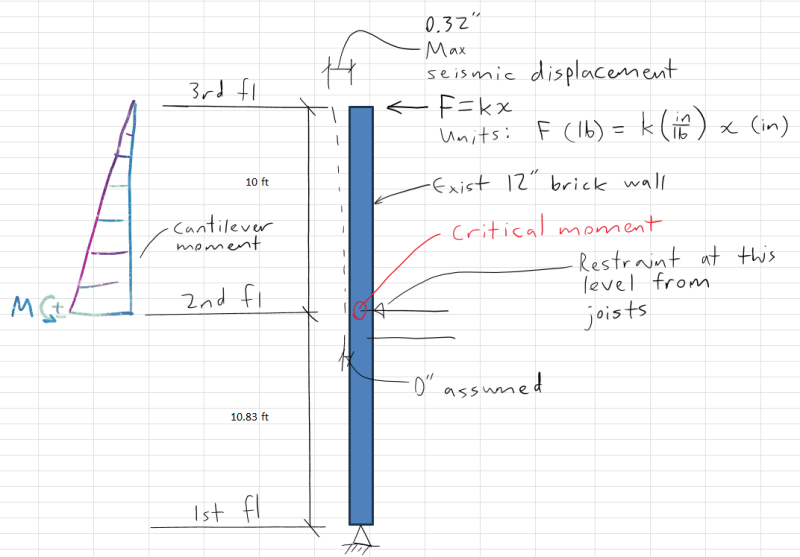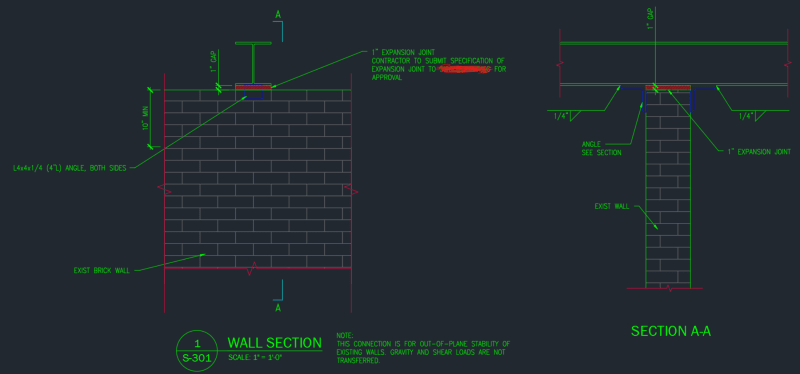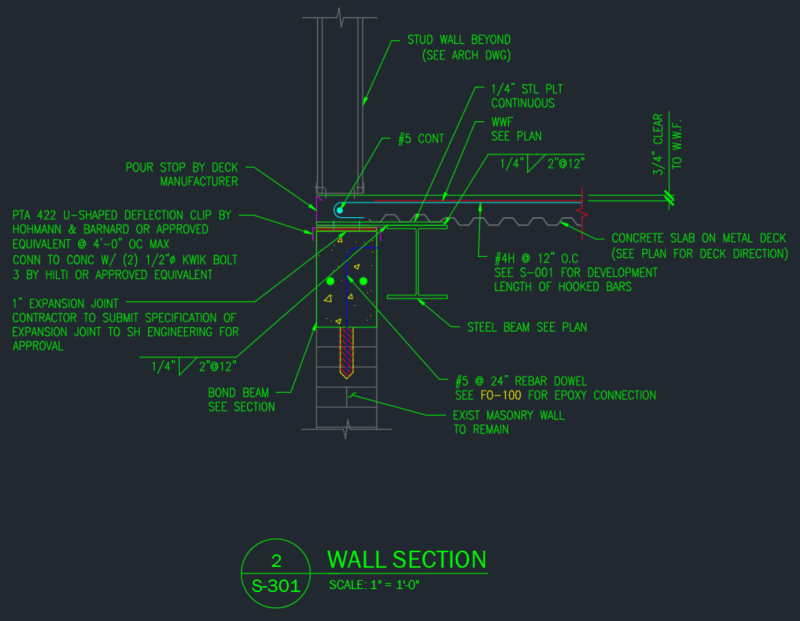milkshakelake
Structural
I have an existing brick wall. I'm adding 3 stories above it, seismically isolated. I put a deflection clip to restrain the out-of-plane bending. A regulator said that my new 3 story addition will bring the old masonry wall along for the ride and put forces on it.
I did a calculation for the bending moment in the brick, and it's overstressed by 80%. Is there something I'm missing here? And is there a better way to do this or think about it?
This is a summary of calculation. I didn't post the whole long thing since I'm not paying y'all enough, but I can if needed.
1. Max seismic displacement is 0.32" at the story where I restrain the 10' tall wall.
2. I calculated the stiffness of the brick wall. This involves f'm=600psi and E=420ksi lower bound values from from ASCE 41-17 (thanks Celt83). Considering 10' cantilever and K=3EI/L^3, K=1260lb/in for a 1' section of wall.
3. Using Hooke's law of F=Kx where K=1260lb/in and x=0.32", F=403lb applied at top of wall.
4. This part is iffy, but...since seismic displacement is at strength level, I use 0.7F=282lb to get it to ASD level.
5. Applying the force at the top of the wall: M=10'x282lb x 12=33,869lb-in.
6. Design check using tension stress ft=M/S=33,869/288 - axial compressive load of masonry=109 psi. This is 80% higher than the allowable lower bound stress of 60psi per ASCE 41-17.
7. *@$&#@^! Life sucks.
This is a sketch of the situation:

These are the details I use to restrain the top of the brick wall:


Real life:

I did a calculation for the bending moment in the brick, and it's overstressed by 80%. Is there something I'm missing here? And is there a better way to do this or think about it?
This is a summary of calculation. I didn't post the whole long thing since I'm not paying y'all enough, but I can if needed.
1. Max seismic displacement is 0.32" at the story where I restrain the 10' tall wall.
2. I calculated the stiffness of the brick wall. This involves f'm=600psi and E=420ksi lower bound values from from ASCE 41-17 (thanks Celt83). Considering 10' cantilever and K=3EI/L^3, K=1260lb/in for a 1' section of wall.
3. Using Hooke's law of F=Kx where K=1260lb/in and x=0.32", F=403lb applied at top of wall.
4. This part is iffy, but...since seismic displacement is at strength level, I use 0.7F=282lb to get it to ASD level.
5. Applying the force at the top of the wall: M=10'x282lb x 12=33,869lb-in.
6. Design check using tension stress ft=M/S=33,869/288 - axial compressive load of masonry=109 psi. This is 80% higher than the allowable lower bound stress of 60psi per ASCE 41-17.
7. *@$&#@^! Life sucks.
This is a sketch of the situation:

These are the details I use to restrain the top of the brick wall:


Real life:

